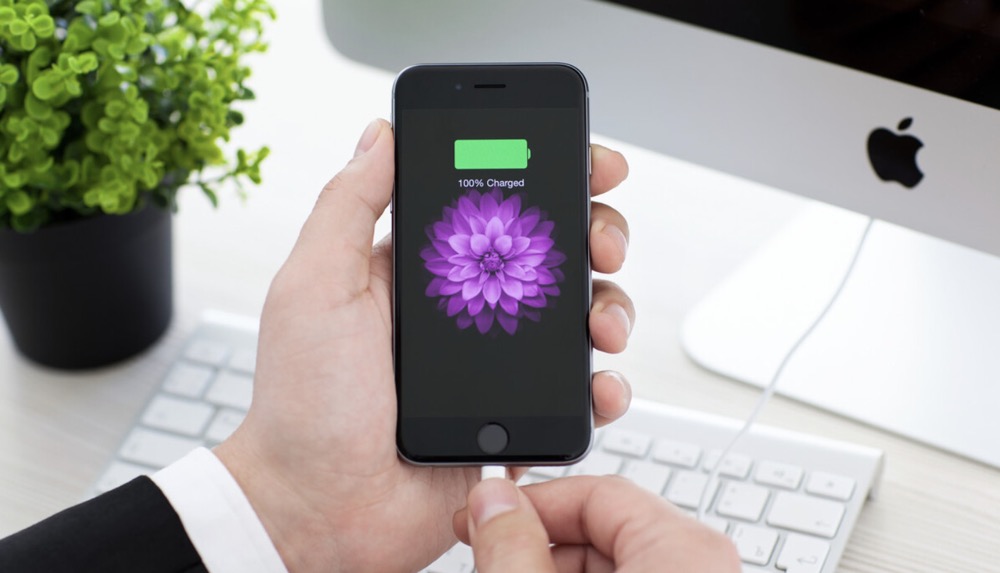Does your Android or iPhone's battery seem to hold less of a charge over time? Like all rechargeable batteries, Li-ion batteries (which are in most phones) become less effective as they age. Even though these batteries aren't made to last forever, having healthy battery and charging habits can extend the life of your battery. We'll show you easy ways to maximize your smartphone battery's lifespan by changing your charging habits.
Don’t wait until the battery is empty to recharge.
Charge your phone throughout the day.
Your phone’s battery has a fixed amount of charging cycles (the number of times you charge the battery from 0% to 100%). For example, if your battery has a lifespan of 400 charging cycles, letting the battery drain every day means your battery will only last 400 days. If you top off the battery before it drains completely, it reduces the number of overall charging cycles, which makes your battery last longer.
- Keeping a battery at a full charge or always draining it to 0 can damage it and reduce it’s capacity. Try to keep your battery midway charged when you can and only charge to 100% when you really need the extra time.
Avoid extreme temperatures.
Exposure to very high or low temperatures drain the battery quickly.
Batteries are made to work best at room temperature, which is about 68 °F (20 °C). Your battery, especially when fully charged, will drain much faster in extreme temperatures. This can cause damage to the battery over time.
- Avoid using your phone at all if the temperature is below freezing 32 °F (0 °C).
- If you live in a very cold region and spend a lot of time outdoors, invest in an insulated phone case.
- Only charge your battery at temperatures between 41 °F (5 °C) and 95 °F (35 °C).
- If the phone or charger feel hot to the touch during a charging session, unplug the phone from the charger as soon as possible to avoid damaging the battery.
Don’t always charge your battery to 100%.
When you’re always charging to 100%, the frequent high voltage can cause stress to the battery.
Fully charging your battery won’t destroy it, you can add some time to the battery’s lifespan by only charging to 80% when possible.
Only use ultra-fast charging when necessary.
Fast charging is convenient, but don’t use it every time you charge your phone.
Fast-charging puts more stress on the battery than necessary, so battery performance can suffer over time. Opt for a standard “slow” charge more often than not to preserve battery longevity.
Use your phone sparingly while it’s charging.
To avoid parasitic load, don’t play games or stream videos while charging your phone.
Parasitic load is what happens while a battery is being drained during charging. Parasitic load adds higher voltage stress to the battery, increases heat, and can cause parts of the battery to continually cycle and deteriorate faster than the rest of the cell. While you can take calls or browse the web during a charging session, avoid heavy tasks.
Use power-saving modes to increase time between charges.
When your battery is slow, turn on your phone’s low-power or battery saving mode.
Both Androids and iPhones have special battery-conservation modes that turn off background apps, decrease processing power, dim the screen, and disable other services that can drain your battery quickly.
- To turn on your iPhone’s Low Power Mode, open the Control Center and tap the battery icon.
- If you have a Samsung Galaxy, open Settings and go to Battery and device care > Battery > Power saving. Tap the switch to turn on Power Saving Mode.
- For other Androids, go to Settings > Battery > Battery Saver and tap Turn on now.
Stick to the power adapter that came with your phone.
Third-party phone chargers may have different voltage ratings than what’s recommended by your phone manufacturer.
Using a charger that supplies your phone with an inconsistent or too-high voltage level can severely impact your battery, and possibly even the rest of your phone.
Partially charge the battery before long-term storage.
If you won’t be using your phone for a while, charge it to 50% first.
Don’t charge it to 100%, as that can cause the battery to lose some of its capacity over time. Charging the battery halfway first will help prevent the battery from draining so much that it can’t be recovered after a long period of no usage.
Keep track of your phone’s battery health.
Both iPhones and Androids have built-in tools for battery health tracking.
You can use these tools to find out more information about your battery’s performance and life span using these tools.
- iPhone: Open your Settings and go to Battery > Battery Health.
- Samsung Galaxy: Open the Samsung Members app and go to Get Help > Interactive checks (or View tests) > Battery status (or Battery).
- Other Androids: Open the Phone app and dial *#*#4636#*#*. When the menu appears, select Battery information (it may be buried in another menu).
- You can also try other Android battery health apps, such as CPU-Z, Battery by MacroPinch, and AccuBattery by Digibites.
Keep your phone up to date.
Installing regular Android and iOS updates can help fix battery drainage issues.
Sometimes software bugs can cause unnecessary stress on your battery. When this happens, developers release bug fixes for these issues through operating system updates. By keeping your phone up to date, you’ll always have the latest bug fixes, battery mode enhancements, and performance improvements.
